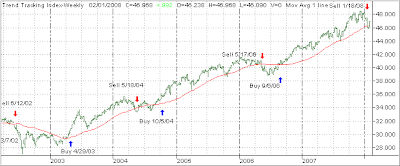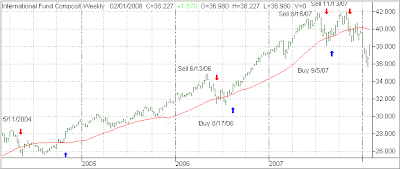 This weekend, I was reflecting on some of the wild events of last week, including a rogue trader’s loss of some $7 billion of France’s number 2 bank (Société Générale), and the Fed’s once-in-a-lifetime 75 bp interest rate cut.
This weekend, I was reflecting on some of the wild events of last week, including a rogue trader’s loss of some $7 billion of France’s number 2 bank (Société Générale), and the Fed’s once-in-a-lifetime 75 bp interest rate cut.
As we now know, last Monday, while the U.S. markets were closed, Société Générale, unwound their massive market positions before going public with the loss caused by one of their traders. This unwinding may have very much contributed to the world wide market melt down and prompted the Fed to cut rates sharply. According to news reports, the Fed was not aware of Société Générale’s troubles.
To me, that means that they may have very well been sucker punched into a rate reduction, which otherwise might have been smaller and/or implemented at the next Fed meeting. While we will never know the truth, Keven Depew of Minyanville had this viewpoint in his five things you need to know (item 2):
“It does look like they were snookered into cutting rates,” Lou Crandall, chief economist at research firm Wrightson ICAP LLC, told the Wall Street Journal in response to a question about the Fed’s Tuesday rate cut.
Snookered? By a Société Générale rogue trader? I don’t think so. If the Fed really was “snookered,” it was “snookered” by any number of the following that are absolutely not related to a Société Générale rogue trader:
More than $100 billion in writedowns (so far) related directly to subprime mortgages, including $22.4 billion from Merrill Lynch (MER), $19.9 billion from Citigroup (C), $14.4 billion from UBS (UBS) and $9.4 billion from Morgan Stanley (MS).
From the July peak, a stunning $340 billion, or 15.6%, collapse in total commercial paper, a decline of unprecedented magnitude.
A $1.2 billion third quarter loss by Countrywide Financial (CFC), the nation’s largest mortgage lender, the first loss for the company in 25 years.
A 1.4% drop nationally in the median price of a home, the first national drop since the Great Depression.
A 70% year-over-year increase in homes in some stage of foreclosure, per the latest data available from the Mortgage Bankers Association.
A 25% decline nationally in housing starts, the steepest decline since 1980.
Tighter credit standards for businesses and consumers despite a reduction in interest rates.
A loss of 61,800 residential construction jobs, according to the Bureau of Labor Statistics.
Be that as it may, it appears that Fed watchers are confused as to what to expect from the next meeting this coming Wednesday. The anticipation is another ¼ point cut and possibly a ½ point.
Either one can have a dire effect on the market place as further cutting is evidence of a weakening economy, which will translate into earnings slowdown and subsequent lower stock prices and therefore a further slide into bear market territory.







